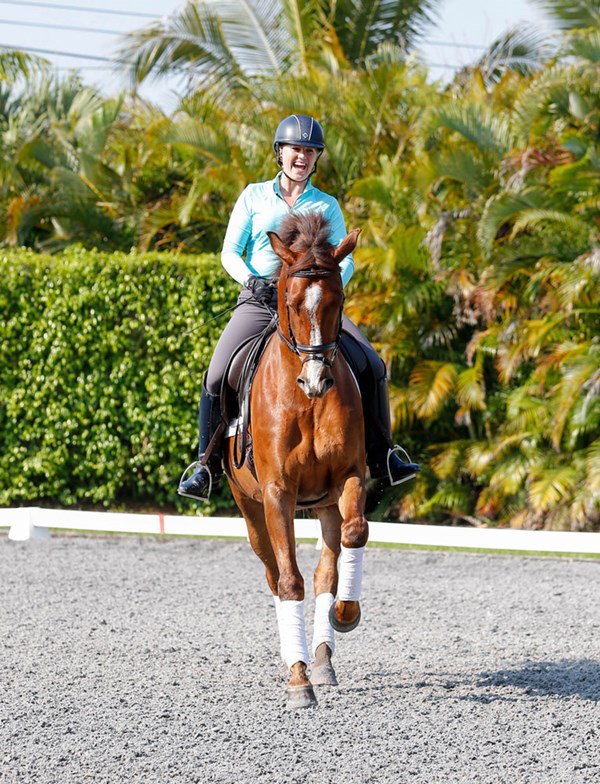
As riders, we must have an extensive toolbox to deal with training challenges when they arise. In a perfect world, we’d all ride nothing but horses who’d been immaculately handled from day one and raised in a flawless dressage environment. But the reality is that we encounter horses with problems all the time.
One that I see regularly is the late flying change. A change is late when the horse’s hind legs change leads one stride (or more) after the front legs. While it’s also possible for a change to be late in front when the front legs change a stride after the hind legs, this is less common, is less of a fault and tends to resolve on its own. Sometimes a horse has a chronically late change behind because he wasn’t taught very well. Sometimes he comes from a different discipline, like the hunters, where the cleanness of a change isn’t a competitive advantage.
Whatever the reason, as much as we’d all like to teach the changes from scratch and do it right, we need tools to address the horses who come to us as a bit of a mess. In this article I’ll explain the tools in my flying-change arsenal:
• making sure the quality of the canter is connected and forward
• picking up a canter from only a whip aid
• riding quick simple changes and
• riding a change from renvers.
Establish a Quality Canter
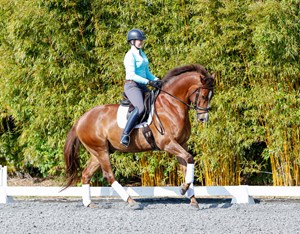
Whether your horse has a confirmed problematic change or has never done the changes in his life, the most important factor in producing ones that are consistent and clean is the quality of the canter. The canter that leads to clean changes is tidy and crisp, not one that’s like two men in a horse costume. It needs to be connected, organized and adjustable without drama or time-consuming negotiations about when, where and how he’ll get it.
When I pick up the canter thinking of changes, I make sure I can ride it bigger and smaller. I’ll ride a few transitions, such as trot–canter–trot, to make sure the horse is in front of my leg and listening.
If the horse has a big and open canter, it needs to be made shorter, quicker and more compact. Trot–canter–trot and walk–canter–walk transitions can help compress and package a strung-out canter. Another great exercise is the shallow loop in First Level Test 3 from H to X to K. This can quicken your horse’s hind legs and package his balance. I’ll even increase the difficulty, riding a loop from H to the second track (just off the rail) at S to E and then a second loop from E to the second track at V to K. The horse doesn’t need to go far off the rail to get the benefits.
This counter-canter exercise can really crisp up the canter, but I don’t go much further than it with my horses until at least the idea of a change is established. I tend not to do much counter-cantering on the horses I’m developing up the levels, but I especially avoid it with horses who are tricky in the changes until the idea of it is more solid. In my experience, getting good changes on a horse who’s easy to throw off balance at the counter-canter is almost easier. The ones who are too comfortable and organized on the “wrong” lead tend not to be the best volunteers of changes.
One major reason horses aren’t clean in the changes is because they’re not connected enough from back to front in the canter and so the hind legs and the front legs change separately. For a horse to learn the changes, I need him to be a little edgy and a bit on fire at the canter. Once he’s got the idea, I work on keeping him settled in the changes. But in the beginning, I almost always find that I have to “hot up” my horse just a bit to produce the best work—not enough leg to send him leaping but enough to make him keen to the aid.
Once I have a connected and adjustable canter, I use three exercises to address the change until I get the one I want. I begin by teaching the horse to respond from a dressage whip.
Canter from the Whip
Assuming the horse is comfortable with the whip, I’ll make transitions from the walk to the canter from the whip only, not from my leg. My goal is that my horse learns to pick up the right-lead canter, for example, when I tap him on his left hip.
I like this exercise for all horses learning the changes but particularly for the ones with a late change behind because it gives me a very specific tool to address the horse’s hind legs in a productive way. Some horses will respond to the whip simply by pushing out behind harder or even by kicking or snatching up the hind legs at the whip’s touch. None of these are the right answer. The correction is to quietly persist until the horse reacts by calmly picking up the lead just from the whip aid. This exercise teaches them a specific command and a specific response that’s very hind-legs focused. If they are focused on the hind legs, they are more likely to produce a clean change when asked.
The timing of this aid is very important. In the example of picking up the right lead, you should ask when the right front leg has just been placed on the ground. The reason is that the canter is a three-beat rhythm that starts with the outside hind leg. So you want to ask for that canter (whether with the leg or with the whip) when the outside hind leg is the next leg he’ll pick up off the ground. In the walk, that moment is the movement of the inside front leg.
So as the horse places his front inside leg down, I’ll tap him with my stick on his outside hip without changing the position of my body. I won’t slide my outside leg back, I won’t apply either leg, I won’t move my seat—nothing. In the beginning, this isn’t a very nice exercise because the horse likely won’t understand right away—he’s used to waiting for the leg aid—and a strong correction or two or more may be needed before he gets the idea. If he doesn’t pick up the canter right away, I use a stronger whip aid a few times to give him the idea. Remember that the horse needs to be a bit on edge to produce good changes, so having to correct him a few times with the whip is going to help you toward that goal.
When my horse gets it right, I use my voice and pat him liberally. Even on the most laid-back, nonreactive horse, it doesn’t take me more than a few tries to establish this idea.
Once the exercise is well established, I’ll ride a short diagonal or a half 10-meter circle back to the track. When I feel the horse is ready, I cue the flying change by touching him on the new outside hip with the whip. Timing is important. Ask for the change when the old inside front leg is coming down. The horse should associate the whip with the canter aid for the new lead and produce a clean change.
Canter from the Whip
This helps a horse focus on his hind end so he will be more likely to offer a clean change.
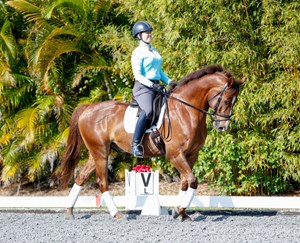
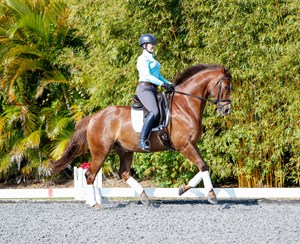
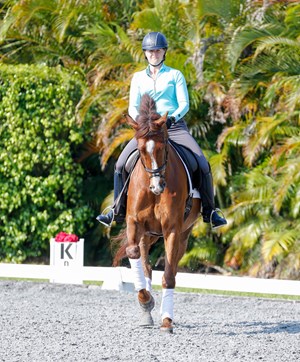
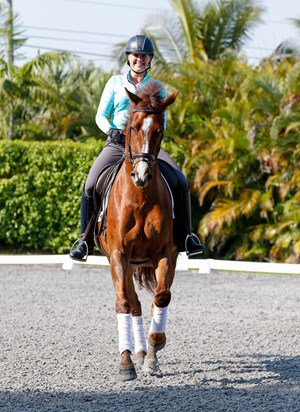
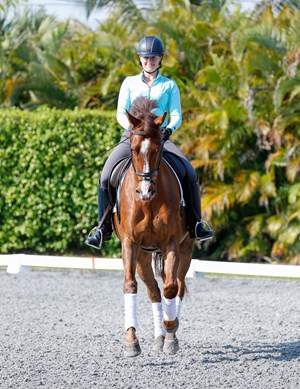
Quick Simple Changes
Riding prompt simple changes through a canter–walk–canter transition is my favorite exercise for starting the changes from scratch because it is great for keeping that edge we need for good changes under control and it’s equally handy for the horses who have the late change in their heads. This is also an exercise that’s great to do in an indoor arena because you can use the wall to help be your half-halt.
Start by cantering a 20-meter circle or even a 20-meter-wide by 30-meter-long oval. Turn down the centerline, ideally coming toward the short wall rather than toward the middle of the ring. Gather up the canter as you turn, and as you approach the center of the circle, make a canter–walk transition, then make a transition to the new canter lead. The timing of the downward transition should be as the hind legs are coming down, so the transition is uphill. The quality of the transition is very important—there should be no trot steps and, ideally, you want a very, very crisp and gathered canter coming into the walk, almost a pirouette canter.
Repeat these transitions off both leads over and over, striving to reduce the number of walk steps by one each time. Start with three or four, then two, then one. By the end, you’ll barely have time to ask for the walk before you’re already cueing the new canter lead.
If your horse volunteers a clean change through this exercise, praise him even if it was before you asked. In the beginning, I always, always praise a clean change even if it isn’t on cue. The horse, of course, will eventually need to build up a tolerance to the edginess required to make the changes, but it’s not anything I worry about much early on in the process.
Quick Simple Changes
Riding prompt simple changes through a canter–walk–canter transition keeps the edge needed for good changes under control.
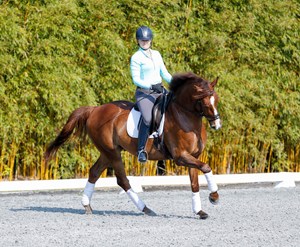
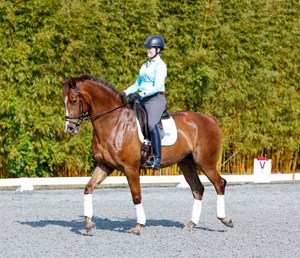
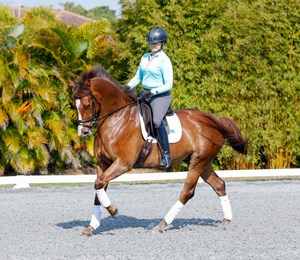
Renvers in Canter
Riding a renvers, a haunches-out, in canter is the best exercise I do for the horses with a late change. Renvers is a lateral exercise where the horse has his hind legs on the outside track and his shoulders on the inside track and he is bent in the direction he is moving. It’s just a great exercise in canter. It makes my horses straight, balanced and organized in a way nothing else I’ve found can. It’s also the hardest, especially on a horse who’s a little on edge.
You’ll need to experiment whether to start on a straight line, like a long side, or on a 20-meter circle. Some horses who are confirmed in doing the changes out in the middle of the ring will find the circle hard in the beginning, but I’ve found it to be the more effective of the two.
Start by establishing a clear shoulder-in, asking the shoulders to come to the inside track while keeping the inside leg at the girth so as not to lose the inside bend. Then ask the horse to bend to the outside, transitioning to renvers by sliding your inside leg back and your outside leg toward the girth. The aids for renvers are a lot like the aids for a flying change, so if your horse offers a clean change or changes just behind, praise him—it’s what you want.
Once the renvers is established, turn onto a short diagonal. When your horse is straight on the line, ask for a flying change while in renvers. Your leg is already in position, so you may need to apply the leg aid more strongly or add a seat cue by intensifying your new outside hip and seat pressure. You may find that you have to take your leg aid off for a stride or two before you ask for the change, particularly if you have to apply a lot of leg to hold the renvers because the horse might confuse the change aid for the aid for renvers.
Renvers is a little magical because it provides a clear path for the horse’s hind legs to change, but it seems to “tangle up” the front legs just enough to help encourage them to wait for the hind legs to prepare to change so you can get a clean change up front and behind. And just like your quick simple changes, if your horse offers a clean change without being asked, praise him. Eventually he’ll need to learn to wait, but early in the process, a clean change is a clean change.
Persistence and patience are key. Getting solid changes isn’t an overnight process, and there will be backward steps among the forward. And at the end of the day, not every horse is going to learn the changes. But asking clear, consistent and fair questions of your horse will never get you in trouble, and these exercises can help get your horse walking—or cantering—the path to solid, clean changes.
Renvers in Canter
Riding haunches-out helps a horse produce clean changes by encouraging his front legs to wait for the hind legs.
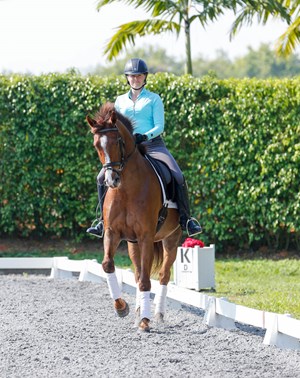
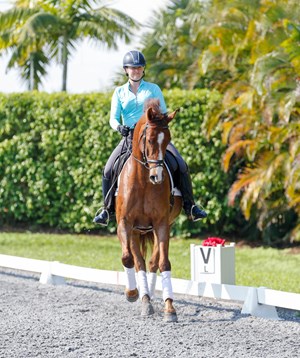
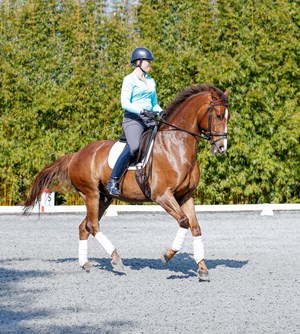
Lauren Sprieser was just 10 years old when a family bike ride in Oak Brook, Illinois, led to the discovery of a nearby stable offering riding lessons in dressage. Her mother, Judy, signed the pair up for lessons.
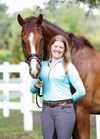
Eight years later, under the tutelage of Lendon Gray, Lauren made her first foray into international-level dressage with Bellinger at the 2003 North American Young Rider Championship, where they helped earn team bronze. While still competing as a Young Rider, she and “Billy” moved to open Grand Prix competition.
A few years later, Lauren and L’Etoile 6 earned team gold at the 2005 NAYRC and the chance to train in Germany with Olympic gold medalist Monica Theodorescu and her father, Olympian Georg Theodorescu.
Getting the taste of running a world-class training center proved crucial. After graduating from college, Lauren spent a year as a working student for several trainers, including Olympic bronze medalist Carol Lavell, before setting up her own business, Clearwater Farm, in Marshall, Virginia, in 2007.
Lauren now trains riders of all levels and disciplines with students ranging from local walk–trot champions and North American Junior and Young Rider Championships gold medalists to the 2008 U.S. Eventing Association Beginner Novice Rider of the Year and a long-listed rider for the Canadian Pan American Games eventing team. She also has become well-known for producing FEI horses, including Clairvoya, who won the 2009 Young Rider Grand Prix; Victorious, who finished fourth at the 2012 USEF Developing Grand Prix Championships; and Ellegria, on whom Lauren will try to qualify for the 2016 World Cup Final and Olympic Selection Trials.
Lauren is also aiming Judy Sprieser’s Stratocaster and Beverley Thomas’ Fiero for the 2015 USEF Developing Prix St. Georges Finals as well as campaigning her own Danny Ocean and Dorian Gray at Third Level—all young horses developed from scratch.
This article originally appeared in the July 2015 issue of Practical Horseman.










